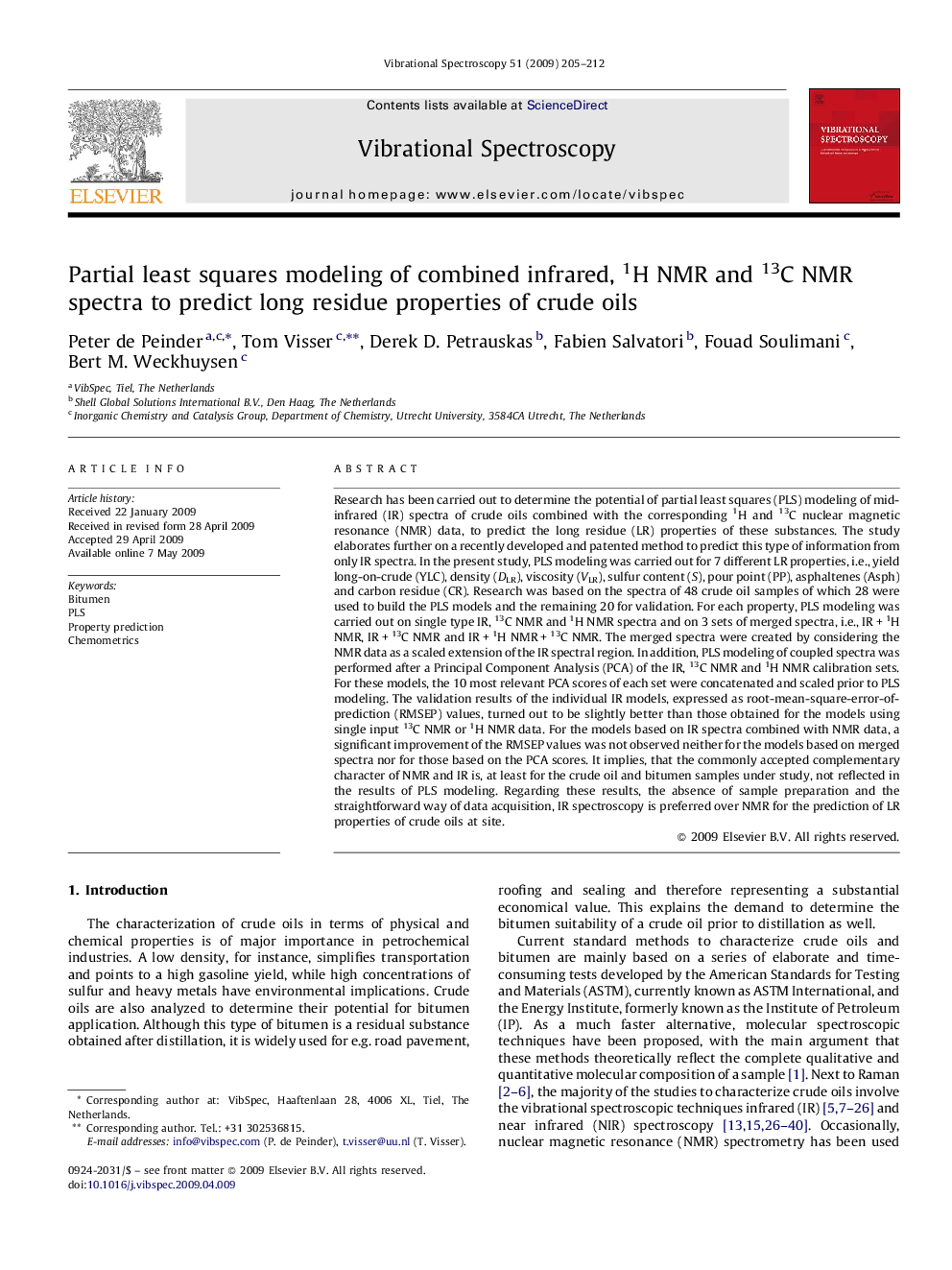| کد مقاله | کد نشریه | سال انتشار | مقاله انگلیسی | نسخه تمام متن |
|---|---|---|---|---|
| 1250711 | 970858 | 2009 | 8 صفحه PDF | دانلود رایگان |

Research has been carried out to determine the potential of partial least squares (PLS) modeling of mid-infrared (IR) spectra of crude oils combined with the corresponding 1H and 13C nuclear magnetic resonance (NMR) data, to predict the long residue (LR) properties of these substances. The study elaborates further on a recently developed and patented method to predict this type of information from only IR spectra. In the present study, PLS modeling was carried out for 7 different LR properties, i.e., yield long-on-crude (YLC), density (DLR), viscosity (VLR), sulfur content (S), pour point (PP), asphaltenes (Asph) and carbon residue (CR). Research was based on the spectra of 48 crude oil samples of which 28 were used to build the PLS models and the remaining 20 for validation. For each property, PLS modeling was carried out on single type IR, 13C NMR and 1H NMR spectra and on 3 sets of merged spectra, i.e., IR + 1H NMR, IR + 13C NMR and IR + 1H NMR + 13C NMR. The merged spectra were created by considering the NMR data as a scaled extension of the IR spectral region. In addition, PLS modeling of coupled spectra was performed after a Principal Component Analysis (PCA) of the IR, 13C NMR and 1H NMR calibration sets. For these models, the 10 most relevant PCA scores of each set were concatenated and scaled prior to PLS modeling. The validation results of the individual IR models, expressed as root-mean-square-error-of-prediction (RMSEP) values, turned out to be slightly better than those obtained for the models using single input 13C NMR or 1H NMR data. For the models based on IR spectra combined with NMR data, a significant improvement of the RMSEP values was not observed neither for the models based on merged spectra nor for those based on the PCA scores. It implies, that the commonly accepted complementary character of NMR and IR is, at least for the crude oil and bitumen samples under study, not reflected in the results of PLS modeling. Regarding these results, the absence of sample preparation and the straightforward way of data acquisition, IR spectroscopy is preferred over NMR for the prediction of LR properties of crude oils at site.
Journal: Vibrational Spectroscopy - Volume 51, Issue 2, 10 November 2009, Pages 205–212